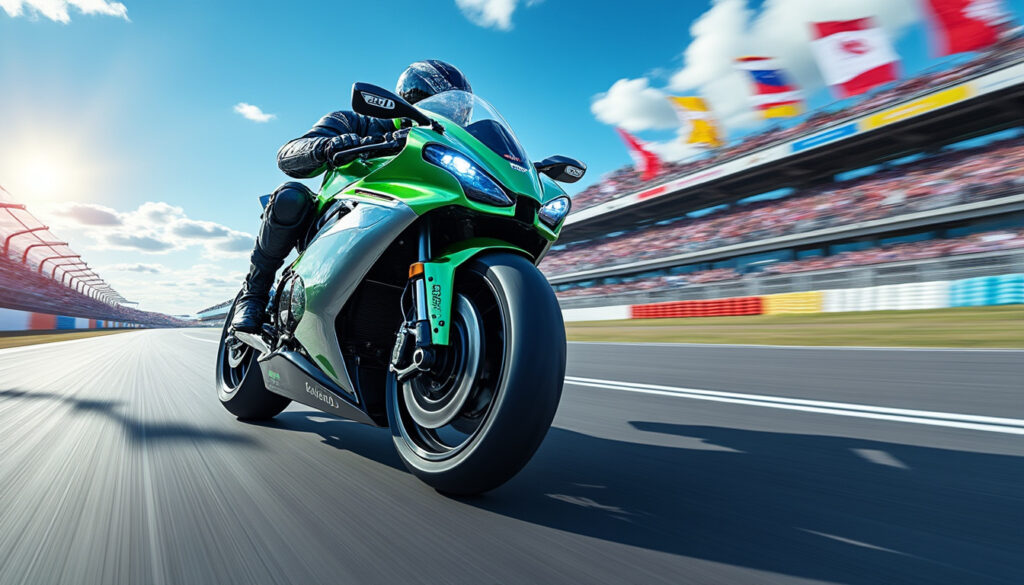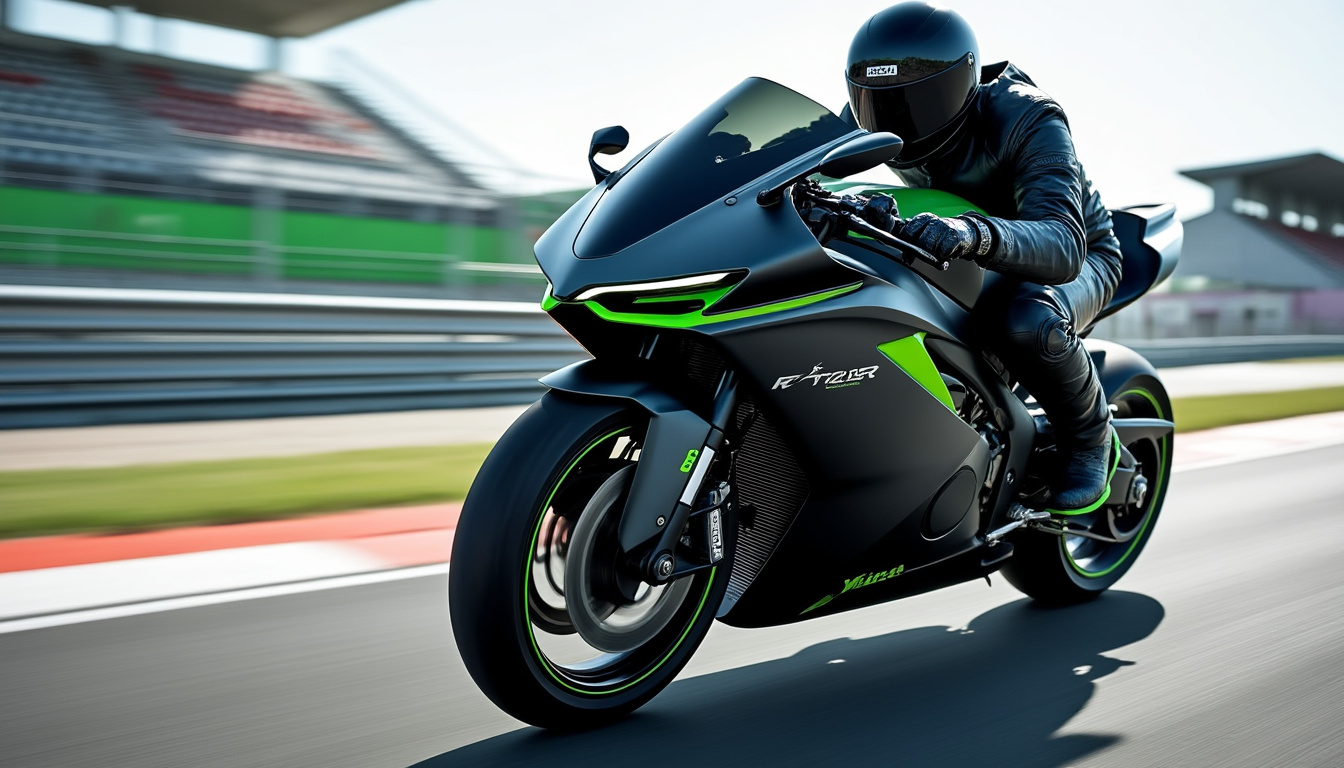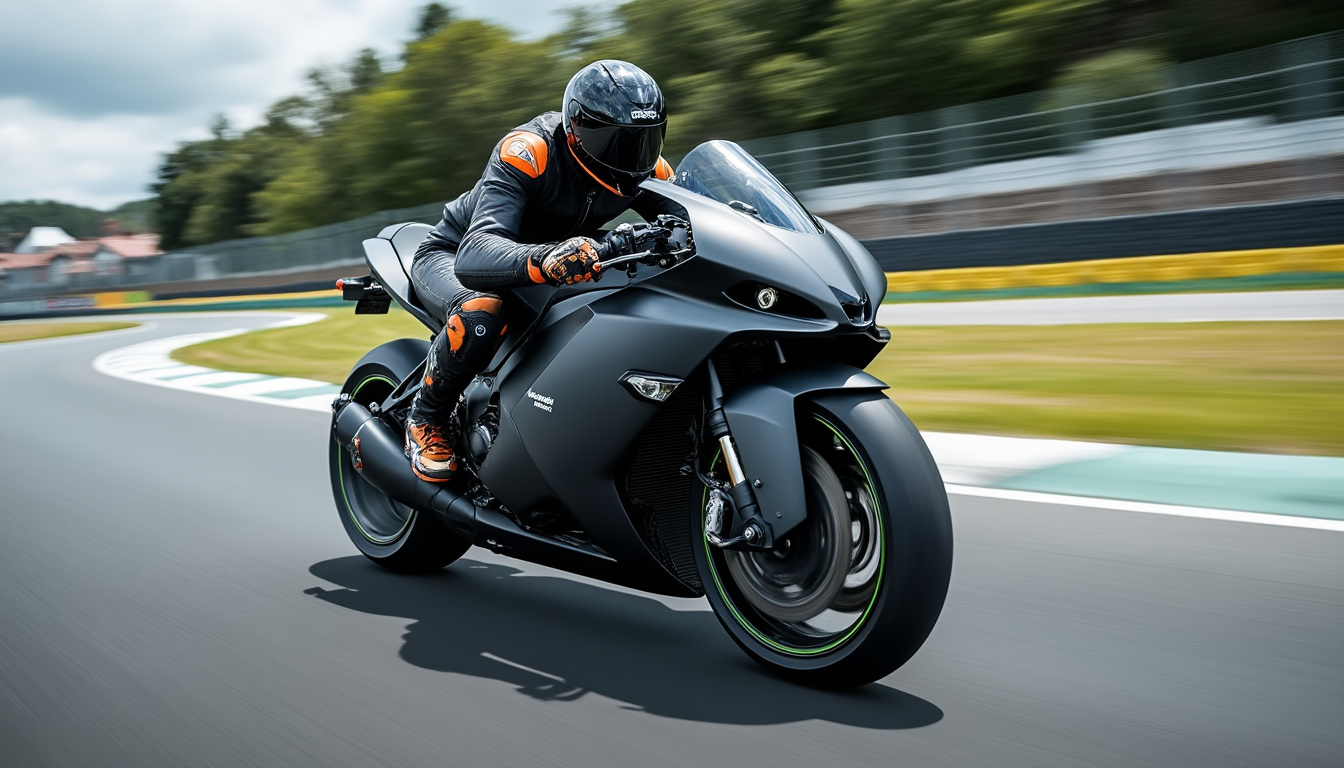Kawasaki's hydrogen motorcycle is making waves in Le Mans

In the vibrant heart of motorcycle innovation, the hydrogen Kawasaki captured the public's attention during the 24 Hours Motos held at the Bugatti circuit in Le Mans. This prototype, known as the Kawasaki Ninja H2 HySE, represents a major advance in the field of sustainable mobility. Equipped with an internal combustion engine, this motorcycle integrates cutting-edge elements to offer an ecological alternative to speed enthusiasts. Beyond the technical aspect, this demonstration paves the way for a futuristic vision of racing and motorcycle enjoyment, all while respecting the environment. Throughout this article, we will explore the fascinating details of this bold innovation and its potential impact on the world of two-wheeled vehicles.
The Kawasaki Ninja H2 HySE: An Overview of Hydrogen Technology
The hydrogen motorcycle prototype, named HySE, was presented for the first time at the Bugatti circuit during the 2025 24 Hours Motos. This historic moment allowed spectators to admire a unique design and cutting-edge technology. Beneath its dynamic aesthetics, the HySE features a modified internal combustion engine, derived from the well-known 998 cm³ inline four-cylinder engine found in the Ninja H2. However, the significant difference lies in the direct hydrogen injection, which considerably reduces harmful emissions.
Before taking its lap, the prototype was displayed in the Hydrogen space of the Automobile Club de l'Ouest, offering the public an overview of this revolutionary technology. This exhibition was enlightening, enabling visitors to discover how this clean energy could transform the motorcycle industry.
Hydrogen Engine Technology: Operation and Benefits
The hydrogen engine of the Kawasaki has been designed to ensure efficient combustion while minimizing harmful emissions. When hydrogen is combusted, the only byproduct generated is water, making this motorcycle particularly appealing to those seeking performance without compromising the environment.
- Performance similar to traditional motorcycles: The Kawasaki Ninja H2 HySE has managed to offer sensations close to riding a classic gasoline engine.
- Reduction of carbon footprint: With nearly zero emissions of other pollutants, the motorcycle positively contributes to the fight against climate change.
- Lightweight and safe: The hydrogen tanks are integrated into sturdy cases, ensuring both safety and an optimized aerodynamic structure.
This combination of performance and environmental respect positions the Kawasaki Ninja H2 HySE as a strong symbol of the future of two-wheeled vehicles. By betting on hydrogen, Kawasaki paves the way for a new era for passionate motorcyclists, while addressing growing concerns related to pollution and fossil fuels.

The Fight for Sustainable Mobility: Kawasaki at the Forefront
Kawasaki is not just developing hydrogen motorcycles; the company is actively engaged in research on sustainable mobility technologies. As a member of the HySE (Hydrogen Small Mobility & Engine Technology) association, the brand collaborates with various stakeholders to promote a future where hydrogen becomes a major energy source for vehicles of all sizes. This partnership aims not only to refine hydrogen engines but also to develop refueling infrastructure suitable for these new vehicles.
| Features | Kawasaki Ninja H2 HySE | Traditional Motorcycle |
|---|---|---|
| Engine Type | Hydrogen Injection | Gasoline |
| Emissions | 0 (only water) | CO2, NOx, particulates |
| Performance | Equivalent to classic motorcycles | Varies by model |
| Charging Infrastructure | In development | Already established |
Development and Challenges of Hydrogen in the Motorcycle Sector
For hydrogen to truly establish itself in the motorcycle sector, several challenges must be met. The rollout of suitable charging infrastructure is crucial to ensuring the long-term viability of these vehicles. Currently, the availability of hydrogen refueling stations remains limited, making the adoption of this technology more complex for the general public.
The public may be hesitant in the face of the unknown. Consumers need to be convinced of the financial, practical, and ecological benefits offered by hydrogen. Having access to accurate information and live demonstrations, like that of the 24 Hours Motos, can play a decisive role in this transformation.
The Impact of Regulation on Hydrogen Motorcycle Development
Government legislation regarding CO2 emissions and the use of renewable energy sources also influences the development of hydrogen motorcycles. Many countries are implementing strict regulations to encourage the adoption of green technologies. Manufacturers must adapt to these changes to meet legal requirements.
- Government support: Financial incentives and subsidies for professionals and consumers using hydrogen.
- Safety Standards: Hydrogen motorcycles must meet strict standards to ensure user safety.
- Education: Promoting awareness of sustainability and the benefits of hydrogen among consumers.
A dynamic environment is emerging, and Kawasaki, with its innovative prototype, is well positioned to influence this new direction. The Kawasaki Ninja H2 HySE could well be the catalyst for a fundamental change in future mobility, allowing for a blend of speed passion and environmental respect.
The Role of Competition in Promoting Hydrogen Motorcycles
Competition plays a vital role in promoting innovations in the motorcycle field. Indeed, events like the 24 Hours Motos at Le Mans not only allow different prototypes to be tested but also attract the general public's attention to new technologies. By showcasing the Kawasaki Ninja H2 HySE, the 2025 edition of the 24 Hours Motos effectively highlights the potential of hydrogen in motorsport.
Racing is no longer just about speed and performance; it also becomes a showcase for sustainability. Spectators are increasingly sensitive to the ecological impact of sporting events. Hydrogen motorcycles could offer an alternative to traditional motorcycles while preserving the spectacle and adrenaline associated with races.
A Promising Future for Hydrogen Races
Races using hydrogen vehicles could even become a discipline of their own in the coming years. This would require an adaptation of existing regulations and an investment in the necessary infrastructure, but the benefits could be substantial.
- Reduction in operating costs: Hydrogen motorcycles, less dependent on fossil fuels, could see their usage costs drop.
- Attracting new fans: The ecological performance of hydrogen motorcycles could draw a new audience aware of environmental issues.
- Collaborative innovation: Competitions could encourage collaborations between different manufacturers and researchers, thus stimulating innovation.
In this context, the presence of the Kawasaki Ninja H2 HySE at Le Mans is not just a simple demonstration; it represents a genuine awareness of the importance of hydrogen in the future of motorsport. This resonates particularly with younger generations, for whom the environment is a major concern.

A Model for Other Manufacturers to Follow
Kawasaki sets a precedent. Other brands could be inspired by this initiative to explore the potential of hydrogen as well. Expanding their product line by integrating environmentally friendly motorcycles would allow them to enhance their competitiveness in an increasingly promising market for sustainable mobility solutions.
| Manufacturer | Hydrogen Motorcycle Model | Status |
|---|---|---|
| Kawasaki | Ninja H2 HySE | Prototype in testing |
| Honda | CN 110 | In development |
| Yamaha | Hydrogen Racer | Preliminary concept |
| Ducati | Ducati Zero Emissions | Research ongoing |
Future Perspectives for Hydrogen Technology in Motorcycles
The demonstration of the Kawasaki Ninja H2 HySE at Le Mans is a strong sign of the changes to come in the motorcycle industry. However, several crucial questions remain to be resolved before hydrogen can truly take off in this sector. Ongoing research on improving engine efficiency, developing charging infrastructures, and achieving public acceptance are all determining factors.
With the rise of environmental awareness, it is evident that hydrogen motorcycles have considerable potential. Their development must be accompanied by a clear communication strategy to educate consumers on the benefits of hydrogen as an energy source. Beyond simple demonstrations, it is essential to generate sustainable interest.
Encouraging Local and National Initiatives for Hydrogen
Governments and organizations must be proactive in encouraging hydrogen-related projects. By investing in charging infrastructures, offering financial incentives, and supporting research and development, it is possible to create a favorable environment for the rise of this technology.
- Infrastructure Projects: Develop a network of hydrogen refueling stations to support adoption.
- Educational Workshops: Promote workshops to raise public awareness about the advantages of hydrogen technology.
- Encouragement for Research: Push universities and research centers to create dedicated hydrogen programs.
Ultimately, the materials and technologies currently in use must evolve for the hydrogen motorcycle to be seen not just as a futuristic concept, but as a reality of tomorrow. Events like that at Le Mans are essential catalysts to stimulate this dynamic. The approach taken today by Kawasaki could very well shape the motorcycle landscape for decades to come, revealing fascinating prospects for sustainable mobility.
Source: www.caradisiac.com
Leave a Reply



Articles relatifs